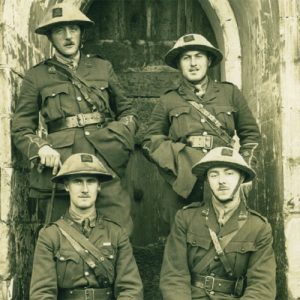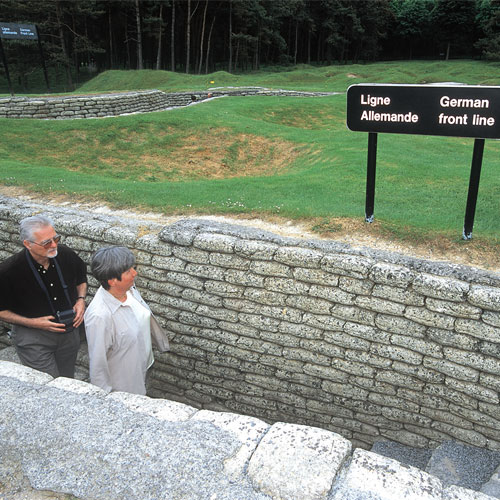The city of Arras was taken over by British troops in early 1916; upon arrival it was found that the former French occupants had used a series of quarries beneath the city to shelter troops, equipment and supplies.
The British then utilised New Zealander tunnellers in a unique operation to link all these quarries up to create a vast underground city which could be used to shelter the entire army along this front – and which would play a major part in operations here in 1917.

One part of this tunnel system opened in early 2008 – the so-called Wellington Quarries is a focal point. Take a tour of the tunnels and discover what it was like to live underground beneath Arras in WW1.
This is a unique experience; the chance to go underground like this is rare on the old Western Front battlefields.
Going out on to the battlefields around Arras you discover why Arras became Britain’s bloodiest battle. This small area of northern France saw the highest casualty rates of the war; with more than 4,000 fatal casualties per day in the battle fought here in April and May of 1917.
Aside from old favourites like Vimy Ridge, the tour looks in depth at some forgotten battlefields like the Chemical Works at Roeux, where the 51st (Highland) Division in particular had grievous losses.
Visit the evocative sunken lane at Fampoux, to see where a handful of Seaforth Highlanders tried to take the German defences nearby, and is now the site of their regimental memorial. At the old abbey of Mont St. Eloi, discuss the air war over Arras, and the daring pilot that flew between the towers of the abbey in 1918.
Leger’s Arras tour looks at the French involvement in the fighting here in the early phase of the war visiting the largest French cemetery from WW1 at Notre Dame de Lorette, and don’t ignore the German sacrifice either, with a visit to the La Targette German cemetery which has more than 44,000 burials – a huge hillside of black crosses.
Join us on the fascinating look at one of the most important battlefields of the Great War, but perhaps one of the least visited. Find out more about our Battlefield Tours.

